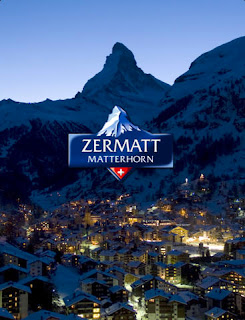The formation of the Matterhorn (and the rest of the Alps) began some 50 to 60 million years ago when the African and Eurasian tectonic plates collided, and layers of sedimentary rock that had formed in the seas between them were thrust up above sea level. Experts suggest that the Matterhorn began as a rounded hill, but gained its distinct pyramidal shape as a result of natural erosive forces over the last million years.
The first successful ascent of this iconic peak was on July 14, 1865 by a team led by English illustrator, climber and explorer Edward Whymper. He had previously made several unsuccessful attempts on the summit. The climb was marred by tragedy as four team members lost their lives in a fall just below the summit during the descent. The second ascent occurred just three days after Whymper’s triumph, from the Italian side. The mountain’s difficult north face wasn’t climbed until July 31 and August 1, 1931.
The Matterhorn’s north face overlooks the Swiss Zmutt Valley, whilst the south stands guard over the Italian ski resort village of Breuil-Cervinia. The Theodul Pass, a trade route used by Ancient Romans and Celts as early as 100BC connects the two destinations. Unknown to most, the Romans originally named the Matterhorn, ‘Mons Silvius’. In fact, it wasn’t until sometime during the 1500’s that Germans named the mountain, the Matterhorn, derived from “matte” meaning meadow and “horn” meaning peak
climbing route
The climbs are long and demanding and it’s essential that climbers have previous alpine mountaineering experience. The usual route is up the Hörnli ridge, also called the North-East ridge. This is the central ridge that can be seen from the village of Zermatt at the foot of the mountain. The ascent starts at Hörnli Hut, a mountain hut situated at 3,260 metres (10,700 ft.) above sea level. It involves 4,000 feet of climbing and takes around six hours up and five hours down. There are fixed ropes on some parts of the climb. Although this is considered the easiest ascent it has an AD (fairly difficult) rating. Other routes on the mountain include the Zmutt ridge, the north face, and the Italian ridge (South-West or ‘Lion’ ridge) which was the route taken by the party that reached the summit three days after Whymper.
zermatt camp
If you are attempting to climb the Matterhorn the best times are from mid-July to mid-September, depending on the amount of snow on the mountain. However, it’s important to bear in mind that the weather on the mountain is dangerously unpredictable and changes commonly occur throughout the day.
ermatt is the world-renowned resort village at the foot of the Matterhorn, boasting luxury hotels, boutiques, restaurants and health spas. It is situated in the canton of Valais in the west of Switzerland.
milky way from matterhorn
International flights into Switzerland arrive at either Geneva or Zurich airports, with both providing easy access to Zermatt through the Swiss rail network. Train is the most convenient way to get to Zermatt as it is a car-free village. Only electric cars are allowed to operate within its boundaries.
Source : www.beautifulworld.com























0 comments:
Post a Comment